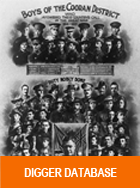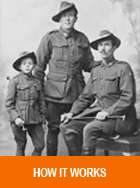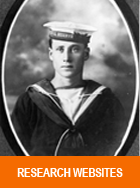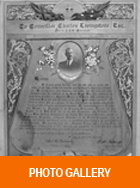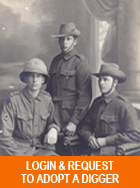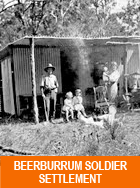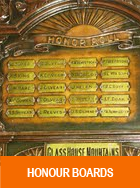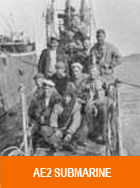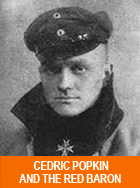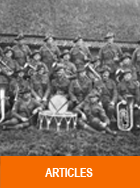How to research a WW1 Digger
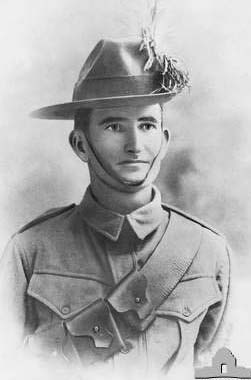 It isn’t as difficult as you might think to research a digger. It is possible to get basic details on his military history in half an hour! And by then, I’m sure you will want to know more about this man and his war experiences.
It isn’t as difficult as you might think to research a digger. It is possible to get basic details on his military history in half an hour! And by then, I’m sure you will want to know more about this man and his war experiences.
Since the lifting of the privacy embargo, there are now many websites you can search for information.
Historians - professional and amateur - are continually creating wonderful websites where you can find photographs of soldiers, stories of regiments, detailed battle histories and locations and photographs of war graves.
The first three sites to search for information in order are:
1. The AIF Project - http://www.aif.adfa.edu.au/index.html
Search by your digger’s name and/or service number to see the following:
Regimental number – Place of Birth – School – Age at enlistment – Religion – Occupation – Address – Marital Status – Age at embarkation – Next of Kin – Previous Military service – Embarkation details & name of ship - Enlistment date – Rank – Unit Name – Fate, either date returned to Australia or details of death and burial.
You can click on Unit Name and be taken to details of his regiment and view names of the soldiers who served with your digger.
Not bad for a first search! But you can discover so much more.
2. A good second step is to search the National Archives of Australia website
www.naa.gov.au
On the Home Page select War Service Records, then select World War 1, then select First Australian Imperial Forces personnel dossiers (World War 1 service records). Select Name Search then follow the prompts.
It’s a bit of a rigmarole but well worth it because you can view, save or print the complete digital record of your digger’s military history. Most records are between 30 and 50 pages so there is a great deal of information there.
3. Then you can go to the Australian War Memorial site: www.awm.gov.au
Select People on the top tab of the Home Page and complete the fields for your search for your digger. You can search the Embarkation Roll, the Nominal Roll and Roll of Honour.
If you select Collections on the top tab you can search for a possible photo of your digger. If you don’t find an individual photo, you might find one of his battalion. Most photos are out of copyright so you can copy and paste them onto your PC. It’s a good idea to reference however – and good manners.
You can also search Unit Histories, Battle Histories and lots more wonderful information. Have a good browse around the AWM website.
4. And don’t forget Trove, www.trove.nla.gov.au a National Library of Australia initiviative where you can search digitized newspapers and a separate Pictures section where you can link to all the photos held at Sunshine Coast libraries, see images and captions.
By now, you should have a great deal of information on your digger and his military service. The RESEARCH WEBSITES link on the Adopt a Digger® website www.adoptadigger.org lists many other websites eg regiment histories, war graves sites, Gallipoli sites and more are being added as they are discovered.
Enjoy your research and thank you for being part of the Adopt a Digger® Anzac Centenary remembrance project.
Chrissy Fletcher
Project Manager

